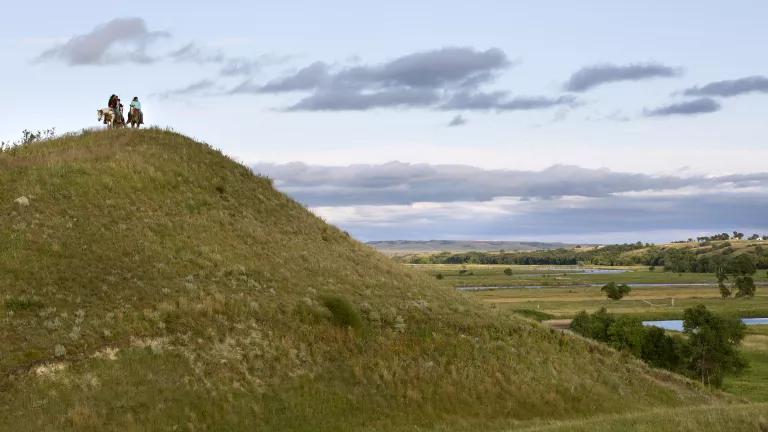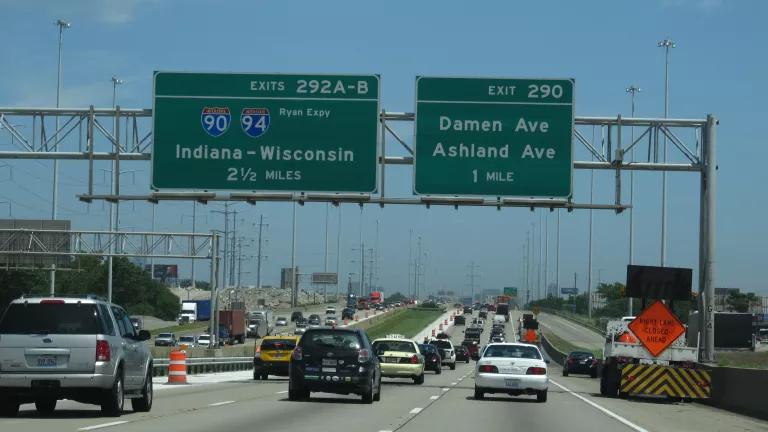One of the things that beguiles people about climate change is that they cannot see it in their day to day. But some striking images made their way into my inbox this morning from a prominent photojournalist documenting an ugly interaction between the Chicago River and Lake Michigan that likely has climate change’s fingers all over it.
Lloyd DeGrane has documented all manner of environmental degradation in this neck of the woods (I am partial to the great photos he did for The Reader in Northwest Indiana). And like all good photographers, he has a knack for being in the right place at the right time. He emailed me this morning with some startling images and this explanation:
I photographed this yesterday afternoon for the Alliance for the Great Lakes. A volunteer for the Alliance called and said that she was looking out her window at the gates opening from the Chicago River into Lake Michigan. She said that the water was slowly changing color, that everything was turning brown. I got to her place and we asked a neighbor of hers for permission to photograph the discharge from an outside area close to the 40th floor rooftop. The color demarcation was obvious. I was stunned and just started photographing the scene below me.
Take a look. This is the confluence of the main branch of the Chicago River and Lake Michigan. Near the top is Navy Pier (where the Ferris Wheel and line of big boats are docked). It is one of the Midwest’s most popular tourism destinations and projects out further into the Lake than the former-Sears Tower would. Below it is the Chicago Lock, the actual point of connection between the two water bodies (the grey building on the narrowed channel near the middle of the picture is the control works for the boat lock). The dark water is the River, swollen with stormwater runoff and rife with undisinfected effluent dumped from the regional water regulators’ treatment plants (something that will thankfully end in the coming years thanks to advocacy and a historically-long legal battle from NRDC and a coalition of committed water warriors). The River water is always darker, but usually contained. But yesterday was not a normal day after the locks were opened to allow the Chicago River to flow out into the Lake to relieve pressure on the system that would have forced flooding (although there was plenty of that anyway).



As we have noted repeatedly, the River is at the heart of a broken system. It anchors Chicago’s water infrastructure, but increasingly fails to deal with the burden of the sorts of violent weather we have been seeing in recent years. Tom LaPorte, spokesman for the Chicago Department of Water Management, told Medill News Service:
"This is a new kind of storm associated with climate change. It's been around for five or six years. Other storms are rather local, but in this case the entire region got really walled.”
And from the same article:
These extreme flooding events highlight an underling pattern of overall wetness over the past two decades, according to Illinois State Climatologist Jim Angel.
Angel said 7½ inches of rainfall has been used as a benchmark to characterize a “100-year storm” in the past, but said the number isn’t as useful anymore, as sizeable storms occur more commonly.
“We keep getting hit over and over again,” Angel said. “I suspect it’s safe to call it climate change.” The trend has also been for more extreme cases of precipitation as opposed to temperature, he said.
Recognizing climate trends is one thing, but dealing with the effects of these trends is another. Angel said the flood affected him, as his flight out of O’Hare was delayed Thursday.
“The big challenge for any big city is that we have large areas of concrete, rooftops. It’s really hard for water to soak in,” he said. “It seems like there’s always more of a risk in an urban area.”
We need to rethink the river.
That means taking a fresh look at the assumptions made a century ago about the conditions that the reversed waterway would be operating under. That means addressing the issue of concrete that Angel notes, by embracing green infrastructure—using natural systems to collect, hold and filter stormwater—something that Chicago led in with a spate of green roof building not long ago, but has fallen woefully behind on, and in the case of regional water regulators, seem to be resistant too. It is not easy. And it is not cheap. But the images that Lloyd sent make it clear that the alternative, accepting the status quo of billions of gallons of sewage going out into Lake Michigan, is less than palatable. We reversed the River a century ago to avoid exactly what we saw yesterday. But if we don’t take the advance of climate into account, we will see ugly images like this that bring it home a lot more frequently.



